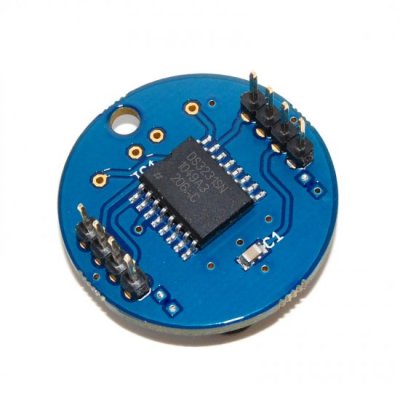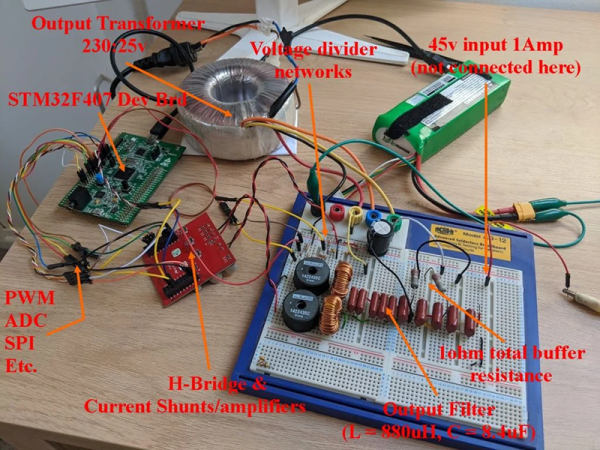Do humanoid robots dream of electric retirement? Who knows, but maybe we can ask Boston Dynamics’ Atlas HD, which was officially retired this week. The humanoid robot, notable for its warehouse Parkour and sweet dance moves, never went into production, at least not as far as we know. Atlas always seemed like it was intended to be an R&D platform, to see what was possible for a humanoid robot, and in that way it had a heck of a career. But it’s probably a good thing that fleets of Atlas robots aren’t wandering around shop floors or serving drinks, especially given the number of hydraulic blowouts the robot suffered. That also seems to be one of the lessons Boston Dynamics learned, since Atlas’ younger, nimbler replacement is said to be all-electric. From the thumbnail, the new kid already seems pretty scarred and battered, so here’s hoping we get to see some all-electric robot fails soon.
power-line8 Articles
Build Your Own Grid Tie Inverter
Inverters that convert DC into AC are pretty commonplace, some cars even have standard AC receptacles in them for you to plug in your favorite appliance. However, there’s a particular type of inverter called a grid tie inverter that allows you not only to make AC, but also inject it back through an AC outlet to power other devices in conjunction with the normal AC service. Why? Maybe you want to use your own generator or solar power. In some cases, the power company will pay you if you produce more power than you consume. Maybe you just want to know you can do it. That seems to be the motivation behind [fotherby’s] build, which is quite substantial.
The setup only handles about 60 watts, but it does all the functions you need: DC to AC conversion as well as phase and voltage matching. Actually, just converting DC to AC is almost trivial if you don’t care about the waveform. But in this case, you do care that you can create an AC signal to match the one already on the line.
Helicopter Chain Saw
Among the most dangerous jobs in the United States are timberjack and aircraft pilot. Combining the two wouldn’t sound like a recipe for success, but in fact it makes the job of trimming trees near pipelines and power lines much safer. That’s what this helicopter-suspended chainsaw does. And it definitely doesn’t look safe, either, but here we are.
The saw is equipped with ten two-foot diameter saws and is powered by a 28 horsepower engine which is separate from the helicopter itself. The pilot suspends the saw under the helicopter and travels along the trees in order to make quick work of tree branches that might be growing into rights-of-way. It’s a much safer (and faster) alternative that sending out bucket trucks or climbers to take care of the trees one-by-one.
Tree trimming is an important part of the maintenance of power lines especially which might get overlooked by the more “glamarous” engineering aspects of the power grid. In fact, poor maintentance of vegitation led to one of the largest blackouts in recent history and is a contributing factor in a large number of smaller power outages. We can’t argue with the sentiment around the saw, either.
Getting Data Out Of Air-Gapped Networks Through The Power Cable
If you are an organisation that is custodian of sensitive information or infrastructure, it would be foolhardy of you to place it directly on the public Internet. No matter how good your security might be, there is always the risk that a miscreant could circumvent it, and perform all sorts of mischief. The solution employed therefore is to physically isolate such sensitive equipment from the rest of the world, creating an air gap. Nothing can come in and nothing can go out, or so goes the theory.
Well, that’s the theory, anyway. [Davidl] sends us some work that punches a hole in some air-gapped networks, allowing low-speed data to escape the air gap even if it doesn’t allow the reverse.
So how is this seemingly impossible task performed? The answer comes through the mains electrical infrastructure, if the air gap is bridged by a mains cable then the load on that mains cable can be modulated by altering the work undertaken by a computer connected to it. This modulation can then be detected with a current transformer, or even by compromising a UPS or electricity meter outside the air gap.
Of course, the Hackaday readership are all upstanding and law-abiding citizens of good standing, to whom such matters are of purely academic interest. Notwithstanding that, the article goes into the subject in great detail, and makes for a fascinating read.
We’ve touched on this subject before with such various techniques as broadcast radio interference and the noise from a fan, as well as with an in-depth feature.
Retrotechtacular: One Does Not Simply String Up A Half-Million VDC Transmission Line
It takes strong and determined population to build a lasting civilization. If the civilization includes electricity and the inhabitants live in a hilly place with an often-unforgiving climate, the required strength and determination increases proportionally. Such is the case of the gentlemen who strung up the first half-million VDC transmission line across New Zealand, connecting the country’s two main islands.
Construction for the line known as the HVDC Inter-Island link began in 1961. It starts at the Benmore hydroelectric plant on the south island and runs north to Cook Strait via overhead cables. Then it travels 40km underwater to the north island and ends near Wellington. This is the kind of infrastructure project that required smaller, preliminary infrastructure projects. Hundreds of miles of New Zealand countryside had to be surveyed before breaking ground for the first tower support hole. In order to transport the materials and maintain the towers, some 270 miles of road were laid and ten bridges were built. Fifteen camps were set up to house the workers.
The country’s hilly terrain and high winds made the project even more challenging. But as you’ll see, these men were practically unfazed. They sent bundles of steel across steep canyons on zip lines and hand-walked wire haulage rope across gullies because they couldn’t otherwise do their job. Six of these men could erect a tower within a few hours, which the filmmakers prove with a cool time-lapse sequence.
Splicing the mile-long conductors is done with 100-ton compressors. Each connection is covered with steel sleeve that must be centered across the joint for optimum transmission. How did they check this? By taking a bunch of x-rays with a portable cesium-137 source.
Embed With Elliot: We Don’t Need No Stinkin’ RTCs
A lot of microcontroller projects out there need some sense of wall-clock time. Whether you’re making (yet another) crazy clock, logging data, or just counting down the time left for your tea to steep, having access to human time is key.
The simplest solution is to grab a real-time-clock (RTC) IC or module. And there’s good reason to do so, because keeping accurate time over long periods is very hard. One second per day is 1/86,400 or around eleven and a half parts per million (ppm), and it’s tricky to beat twenty ppm without serious engineering.

Good RTC ICs like Maxim’s DS3231, used in the Chronodot, can do that. They use temperature correction logic and a crystal oscillator to get as accurate as five parts per million, or under half a second per day. They even have internal calendar functions, taking care of leap years and the day of the week and so on. The downside is the cost: temperature-compensated RTCs cost around $10 in single quantity, which can break the budget for some simple hacks or installations where multiple modules are needed. But there is a very suitable alternative.
What we’re looking for is a middle way: a wall-time solution for a microcontroller project that won’t break the bank (free would be ideal) but that performs pretty well over long periods of time under mellow environmental conditions. The kind of thing you’d use for a clock in your office. We’ll first look at the “obvious” contender, a plain-crystal oscillator solution, and then move on to something experimental and touchy, but free and essentially perfectly accurate over the long term: using power-line frequency as a standard.
Continue reading “Embed With Elliot: We Don’t Need No Stinkin’ RTCs”
Retrotechtacular: Making Porcelain Insulators
Here is a silent film produced by General Electric that depicts the making of many kinds of porcelain insulators for power lines. Skilled craftsmen molded, shaped, and carved these vital components of the electrical grid by hand before glazing and firing them.
Porcelain insulators of this time period were made from china clay, ball clay, flint, and feldspar. In the dry process, ingredients are pulverized and screened to a fine powder and then pressed into molds, often with Play-Doh Fun Factory-type effects. Once molded, they are trimmed by hand to remove fins and flashing. The pieces are then spray-glazed while spinning on a vertical lathe.
Other types of insulators are produced through the wet process. The clay is mixed in a pug mill, which is a forgiving machine that takes scrap material of all shapes, sizes, and moisture levels and squeezes out wet, workable material in a big log. Chunks of log are formed on a pottery wheel or pressed into a mold. Once they are nearly dry, the pieces get their final shape at the hands of a master. They are then glazed and fired in a giant, high-temperature kiln.
Continue reading “Retrotechtacular: Making Porcelain Insulators”
















